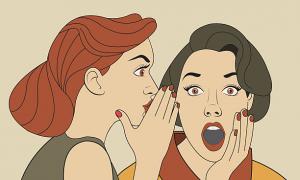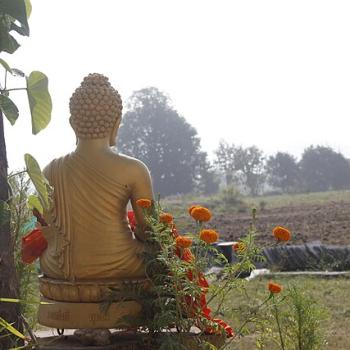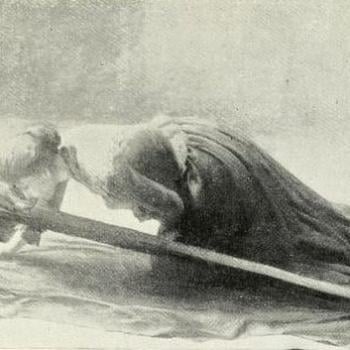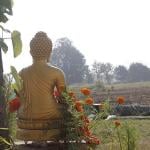I recall reading the introduction to Madam Alexandria David-Neel’s “Secret Oral Teachings in Tibetan Buddhist Sects,” where she was advised by one of her teachers that there was no problem in publishing the secrets. They remain secret unless someone is ready to hear them.
Sort of the truth about such things.
With that, here’s the nub of Zen Buddhist wisdom, ready or not…
For me the best religious analysis of our situation is found in three Buddhist terms: the four marks of existence, the two truths, and the three bodies of the buddha. If there are any authentic first principles to a spiritual life, certainly the Zen Buddhist spiritual life, they are these. While I remain wary of dogmas, I find these the most helpful pointers to the structures of the human heart of any I’ve encountered in my life. While all things need to be held lightly, subject to mutation and change, these have been the pointers that have so far proven as true as anything I’ve encountered in this saha world.
These are why I call myself a Buddhist.
The four marks are observations about the nature of things, and specifically our human condition. The first three are:
1) Everything is made of parts, and they will inevitably come apart. This speaks to the fundamental structures of the universe as well as to the creation of our minds. But, it is the mind, it is the heart that it’s most critical for us to understand. We are real. But we are impermanent.
2) There is no abiding self. The self is real. As I said, we are real, you and I. Pinch us and we hurt. But our exist4ence is mutable. And in the end, we are mortal. Nothing escapes the dissolution of the body. The wonderful mystery that we are, our unique noticing of the universe, our little corner ends.
3) The motion of things rising and falling is experienced by humans as painful, causing anxiety and anguish. I call this encounter the buzz. The buzz is in the back of everything we encounter, behind every victory.
The fourth mark is asserts that there is a way through the hurt. This is the good news of Zen Buddhism. While the buzz belongs to the universe, this reality belongs specifically to our human world. Given the size of the cosmos, “human” here would be any being with a consciousness that can discern the first three marks.
The two truths can be summarized as:
1) Everything exists within a play of mutual causality, creating, living, dying.
2) The absolute emptiness of these rising and falling things.
We humans naturally apprehend the first by close observation, while the second is recessive, and we normally have to seek it with the aid of practices of presence.
Rather more complex is the radical identity of these two truths, the formless world and the world of form are in fact one thing. While it is possible to find these principles within the Nikayas, the early writings, they are not developed for hundreds of years. The second century monk Nagarjuna who I mentioned earlier is generally credited for sorting it out. He presents the facts of these two truths and their absolute identity with a razor. Personally, I’ve found once it arrived in China and East Asia, and then presented in the conversations of Zen adepts, and then especially through Eihei Dogen’s poetic pen drawing my heart and my being into what it means as a living reality.
For us on the Zen way the spiritual project is seeing into these truths. We normally start with our plain observation of the phenomenal world. It is as it is. While temporary and causally related, it is real. And. The next thing to notice is how everything within the phenomenal world is wildly open, boundless, empty.
The spiritual project is to notice the world that we are, that we are boundless, and then beyond either sense of separation. And then letting go of that sense of beyond separation. What in the Zen way is called not one, not two.
In many ways this is the pivot observation for Zen.
And, the three bodies of buddha describe how we encounter these things. The first two are touched on a lot. And I’m finding the third increasingly important.
1) Within history and within that rising and falling of things.
2) As totally empty of substance. There is no part that abides. Everything passes.
3) And a third place, one of mystery, the part where our human minds and hearts engage the mystery. Where the rising and falling feels less concrete, and more fluid. Dream and metaphor are the language of this body.
But, as wonderful as this is, it doesn’t end there. I think of that indigenous woman, so tiny, and her child. Hungry. I think of all the sufferings of our human condition. Those beyond our control, and those within our hands to change.
In this world where we notice we exist within bonds of connection.
This is not about lists. It isn’t about the finest analysis. It’s about a hungry child. It’s about my restless heart. It’s about how we meet the world. And, I cannot express my gratitude enough for finding it. Actually, it feels something deeper than finding. As the Zen teacher Zenju Earthlyn Manuel says “It is all very natural to me. I welcome the Dharma as it has welcomed me long before I was born.”
It is about not turning away. It is about leaning into the gift and learning to hold with open hands. A bad metaphor, but I hope it points. Hold all things to your heart. But be ready to let go. Mary Oliver sings it best: “To live in this world, you must be able to do three things: to love what is mortal; to hold it against your bones knowing your own life depends on it; and, when the time comes to let it go, to let it go.”
I feel the tugs of our connections. While in some ultimate sense these connections are touchable, but they are not a place we can live. It is boundless and open. Ineffable. Our profound connections with each other and the world become the background of our knowing.
Everything, every blessed thing is joined most intimately within a wild openness.
The truth of the matter is that this realization, finding this place, this not one, not two, is our birthright. There’s an old Buddhist saying that it is extremely rare and precious to be born human. As only humans can awaken to the deep matter. Maybe. But if that’s so the word human needs to be stretched. Even on this planet humanness is a constellation of degrees of things that are common to other animals. And. Given the size of this universe, it’s really hard not to assume there are other creatures out there just as capable of opening to the mystery of this place.
And. This realization is totally hit or miss. Maybe graces come. Maybe they don’t. It can be like being hit by a bus. Or, like Paul’s encounter on that road to Damascus.
The Zen teacher Jules Shuzen Harris gave a talk on the bottom line of all this. “Unfortunately for many of us, the stressful life we live, the materialistic preoccupation we have, and the education we receive seldom gives us the freedom to understand our intrinsic nature, which is boundless.”
One of the most amazing gifts of the Zen tradition is that it offers practices that put us in the way of actually meeting this boundless. Many teachers have observed, including for me John Tarrant, that awakening our hearts is like being hit by a bus. It is a happy accident. While our spiritual practices make us accident prone. And none seem more effective in that matter than those found in Buddhism, and specifically, Zen.
There are many good books on Zen meditation practices. In an appendix I will include some of the primary texts, worth visiting and revisiting.
Here, however, I want to offer the nugget of the matter, as best I understand it.
Sit down. Shut up. Pay attention.
With these three things, sitting down, shutting up, and paying attention we are invited into the ways of silence.
Of care.
Of intimacy.













